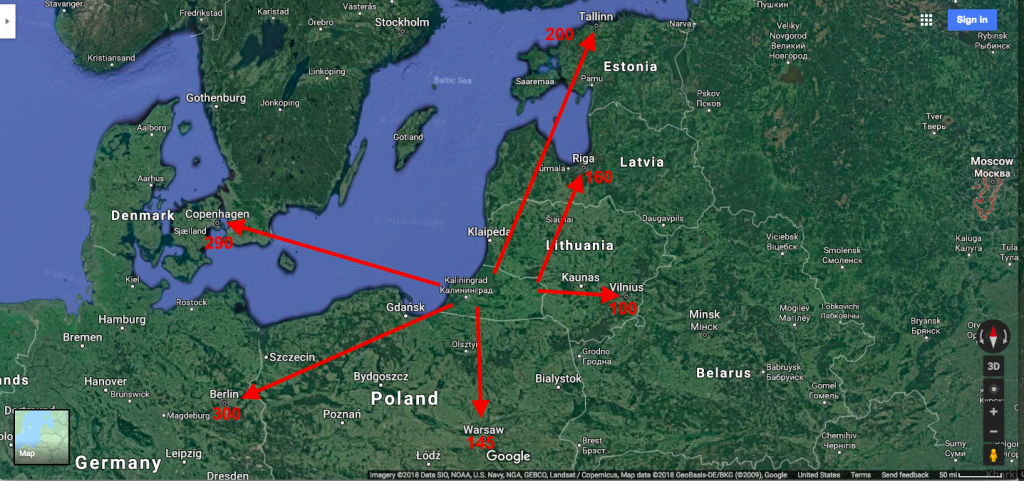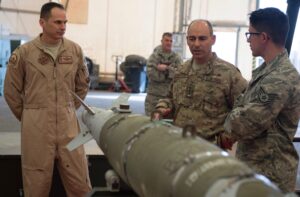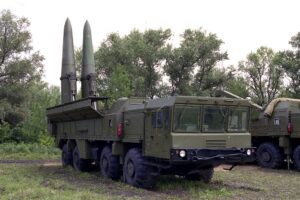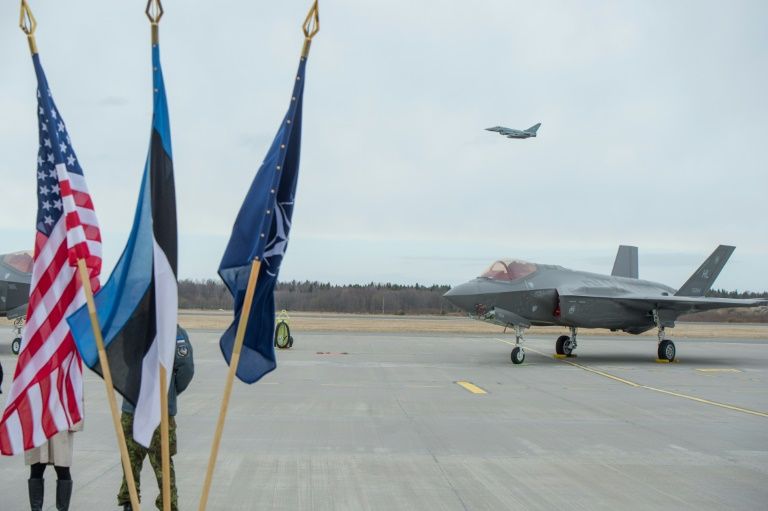
AFA 2019: “If we have to go in there to take down, for instance, the Kaliningrad IADS [Integrated Air Defense System], let there be no doubt we have a plan to go after that,” the commander of US Air Forces in Europe assured reporters here today. “We train to that. We think through those plans all the time, and… if that would ever come to fruition, we’d be ready to execute.”

If Russian aggression out of the strategically located Kaliningrad enclave required a US response, Gen. Jeff Harrigian continued, “it would be a multi-domain, very timely and effective capability that we would bring to ensure we have the access we need in that environment.”
Unsurprisingly, the general didn’t give details on what that plan of attack would be. But the unique position of Kaliningrad, nestled between Poland and Lithuania, well away from the rest of Russia, makes it both an excellent advance base and a highly exposed target. Russian anti-aircraft, anti-ship, and surface-to-surface missiles based there can threaten much of NATO, which is forcing the Air Force in particular to figure out how to better defend its hard-to-miss mega-bases and disperse its aircraft to multiple sites. Conversely, the Russian launchers are also well within range of NATO warships in the Baltic Sea and NATO artillery ashore — and, for that matter, a relatively short drive for NATO tanks.

The geography creates new options for what was traditionally a pure airpower mission, if the US and its allies can coordinate all those disparate forces operating in different domains. That is a tremendous challenge.
What Harrigian would say in public is that he and his Pacific Air Forces counterpart are the ones bringing the hard problems that drive the Air Force’s work on future multi-domain operations: the quest to combine air, land, sea, space, cyberspace, and electronic warfare in a single symphony of violence to break down advanced defenses.
“My job is to be the demand signal to big Air Force to give us the capabilities, over time,” Harrigian told reporters at the annual Air Force Association conference outside Washington, DC. “They have the PowerPoint… but we have to turn that vision into incremental capabilities that we give to our airmen and allow them to experiment.”

Grand Visions, Hard Realities
Harrigian, in particular, has a lot of past experience trying to make the future real. He was founding director of the Air Force’s F-35 Integration Office, which took on the daunting challenge of starting to turn the brand-new and often-buggy stealth fighter into the digital linchpin of Air Force operations. In fact, the F-35’s sensors and communications capability have so overshadowed its traditional fighter-bomber role that the Air Force Chief of Staff, Gen. Mark Goldfein, has called “a computer that happens to fly.”
Harrigian’s next job was at Air Forces Central Command, as the air commander in the Middle East, where the military is actually starting to coordinate its disparate branches to conduct real-world multi-domain operations. But today, a single such operation takes days, weeks, or months of painstaking preparation to pull together different units, doctrines, and legal authorities. That pace is far too slow for a major war against a nation-state like Russia or China.

“I was in AFCENT for two years,” Harrigian said. “We were operating multi-domain. Now we need to continue to work through how we better decentralize and push down those authorities and bring in tools that allowed us to do that.”
In NATO particularly, it’s hard enough to get 29 different national militaries to communicate across barriers of language, bureaucracy, and incompatible technology. But recent wargames like Rapid Forge have provided valuable practical experience, Harrigian said, particularly in how to execute what’s being called “agile combat employment,” in which aircraft disperse from NATO’s massive main air bases, such as Ramstein in Germany, to large numbers of smaller sites. That requires a lot of logistical groundwork, Harrigian said — less about building runways and ammunition bunkers than setting up compatible networks — but it also massively complicates the enemy’s problem tracking and targeting the dispersed force.
The Air Force is also looking at better ways to defend Ramstein, but that’ll take time: “If I can get it inside of five years, I’ll be very encouraged,” Harrigian said.
Harrigian is now working with Air Force HQ in Washington and with Air Combat Command, led by Gen. Mike Holmes, to come up with a long-term program of larger and more challenging exercises.
“We’ve got to flesh out this CONOP [Concept of Operations] to a greater level of detail,” Harrigian said.